10 Best Sweet Wine Bottles in 2025: Types, Prices, Tasting Notes
With their fruity and nutty flavors, sweet wines are an excellent choice for a joyous party or a casual brunch. At the same time, some sweet wines like Madeira are favorites among wine collectors because of their great aging potential as well.
In this article, you’ll discover everything you need to know about sweet wines — the best bottles to buy in 2024, the various types, how they are made, and how to invest in the finest sweet wines through Vinovest.
Further reading
- Check out these guides covering extraordinary Sweet Red Wines and Sweet White Wines.
- Ready to start investing in wines? Here's a guide on How to Invest in Fine Wines from as little as $1,000.
10 Best Sweet Wine Bottles to Buy in 2024
Wines like Port, Moscato, some Riesling wines, and Sauternes that contain residual sugar after fermentation are referred to as sweet wines.
The residual sugar in sweet wines acts as a natural preservative — which is why they’re perfect for cellaring as well!
The luscious bottles you should check out now are:
- 2018 Egon Muller Scharzhofberger Riesling Trockenbeerenauslese, Mosel, Germany
- 1882 Graham Port ‘Ne Oublie’ Tawny, Portugal
- 2013 Markus Molitor Wehlener Sonnenuhr Riesling Trockenbeerenauslese, Mosel, Germany
- 1850 Companhia Vinicola da Madeira CVM Malmsey Vintage, Madeira, Portugal
- 1990 Henriques & Henriques Century Solera Malmsey, Madeira, Portugal
- 2008 Royal Tokaji Essencia, Tokaj-Hegyalja, Hungary
- 1971 Chateau d'Yquem, Sauternes, France
- 2010 Avignonesi Occhio di Pernice Vin Santo di Montepulciano, Tuscany, Italy
- 2004 Klein Constantia Vin de Constance Natural Sweet Wine, Constantia, South Africa
- 2006 Inniskillin Cabernet Franc Icewine, Niagara Peninsula, Canada
1. 2018 Egon Muller Scharzhofberger Riesling Trockenbeerenauslese, Mosel, Germany ($17,467)

The lush and balanced 2018 Egon Muller Scharzhofberger is made from the Riesling grape. It comes from the Scharzhofberger vineyard of the Wiltingen appellation in Mosel.
Its dominant flavors of pineapple and mango are balanced with its high acidity. It is best served with pork, shellfish, poultry, and cheese.
2. 1882 Graham Port ‘Ne Oublie’ Tawny, Portugal (7,659)
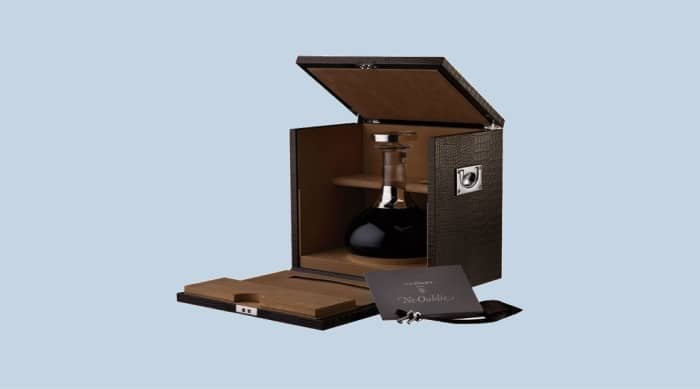
The 1882 Graham Port ‘Ne Oublie’ Tawny is a fortified wine made from a red blend of native red wine grapes. This red wine is one of the most expensive sweet wines made in Portugal.
Only 656 bottles of this red port were produced in 1882. That’s why this vintage port is one of the most difficult-to-find wines in the world.
Good aging has given this red wine a fresh orange zesty note. It has also developed notes of spices and herbs that contrast the natural sweetness of the wine.
3. 2013 Markus Molitor Wehlener Sonnenuhr Riesling Trockenbeerenauslese, Mosel, Germany ($4,628)
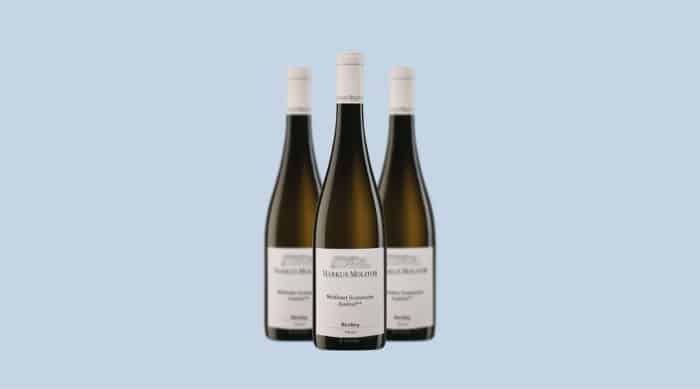
This wine is from the indigenous Riesling grape and is produced in the Wehlen appellation of Germany.
It is a lush and balanced wine that showcases classic Riesling flavors. The ripe grapes give the wine the dominant fruity flavors of pineapple and apricots with subtle hints of lime.
4. 1850 Companhia Vinicola da Madeira CVM Malmsey Vintage, Madeira, Portugal ($3,738)

This vintage Madeira is made from the ancient grape variety of Malvasia. It is one of the sweetest wines produced in the Madeira Malvasia appellation of Portugal.
This semi-sweet dessert wine is known for its caramelized, sticky texture. On the palate, you get the classic sweet and savory flavor of the Malvasia grape.
5. 1990 Henriques & Henriques Century Solera Malmsey, Madeira, Portugal ($1,373)

Produced by Henriques & Henriques in the Madeira Malmsey appellation, this Madeira is a bold and very sweet wine with medium-high acidity.
This sweet wine’s caramelized texture stays on the palate, and the saline note adds a beautiful contrast to the sweetness. It is made from Malvasia grapes that lend tropical notes of tamarind and honey to the wine.
6. 2008 Royal Tokaji Essencia, Tokaj-Hegyalja, Hungary ($1,354)
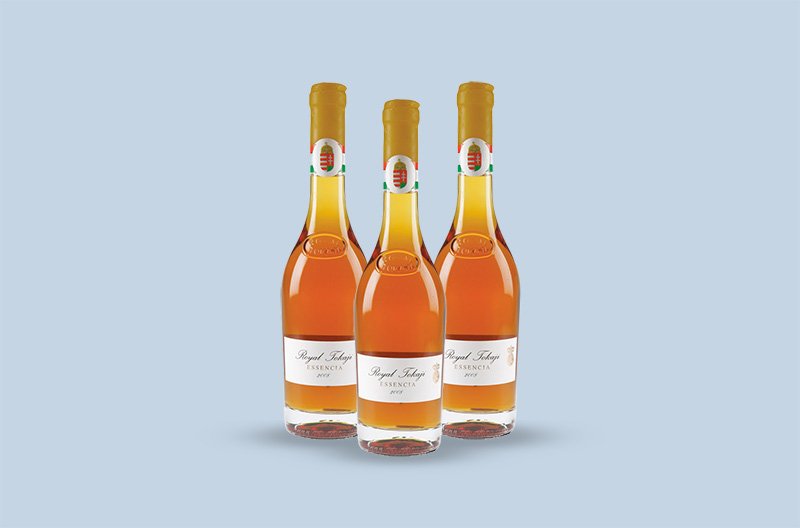
The 2008 Royal Tokaji Essencia is made in the Royal Tokaji winery in Hungary.
This wine has dominant honey, apricot, and peach flavors with aromas of tea and blossoms. It has high residual sugar levels, making it a perfect wine to store in your cellar.
7. 1971 Chateau d'Yquem, Sauternes, France ($889)
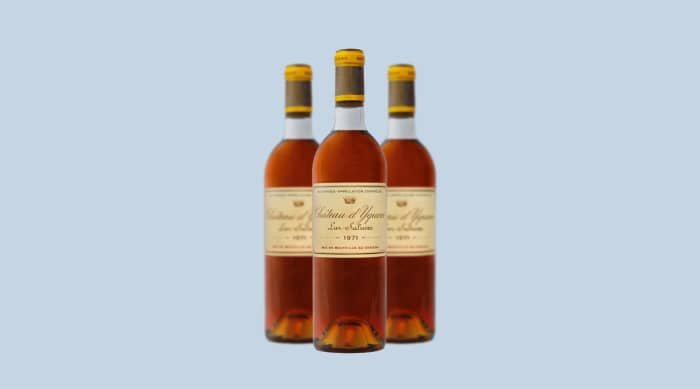
Château d’Yquem, located in the Sauternes district of Bordeaux, is famous for making expensive Sauvignon Blanc - Semillon varietals.
A vibrant and balanced French white wine, the 1971 Chateau d'Yquem is often consumed with blue cheese. It has sweet honey notes with soil and earthy texture. This sweet white wine has a bitter finish that balances the sweetness perfectly.
8. 2010 Avignonesi Occhio di Pernice Vin Santo di Montepulciano, Tuscany, Italy ($376)

This Montepulciano wine is produced by Avignonesi, a well-known Sangiovese wine producer in Italy. Avignonesi is famous for its Vino Nobile di Montepulciano dry red wine, but the sweet red wines have recently gained huge popularity as well.
The 2010 Avignonesi Occhio di Pernice Vin Santo di Montepulciano wine opens with complex aromas of dried plums, propolis, gingerbread, malaga, and tobacco. On the palate, it’s sweet and offers dried apricot and smoked hazelnut flavors with nuances of spice.
9. 2004 Klein Constantia Vin de Constance Natural Sweet Wine, Constantia, South Africa ($255)
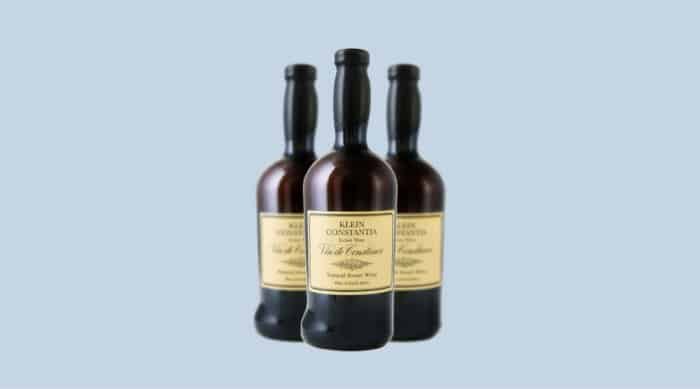
This sweet wine is made by Klein Constantia in the Constantia appellation of South Africa.
The Muscat Blanc a Petits grains give it a beautiful golden color with a light body and balanced acidity. The aromas of tropical fruit, dried pineapple, other fresh fruit, and raisins take over the nose.
10. 2006 Inniskillin Cabernet Franc Icewine, Niagara Peninsula, Canada ($201)

Niagara Peninsula is a wine region in Canada famous for producing some of the world’s best Ice wines.
This red wine has Muscat grape flavors, and the smooth texture stays on the palate.
The Cabernet Franc grape gives this sweet red wine a lush and balanced texture. Cinnamon, spice, and earth with intense fruit flavors of cherry, redcurrant, and marmalade dominate the palate.
What are the different kinds of sweet wines?
9 Types of Sweet Wines
Here are some of the most popular sweet wines:
- Port Wine
- White Zinfandel
- Moscato
- Riesling
- Sauternes
- Ice Wine
- Tokaji Aszu
- Recioto Della Valpolicella
- Sweet Sherry
1. Port Wine
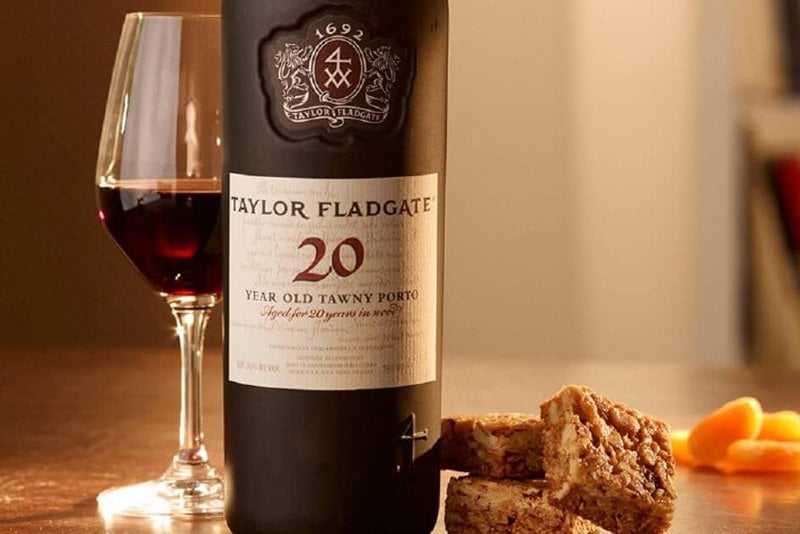
Port wines are sweet, fortified wines made in Portugal. They come in four styles — red wines, White, Rose, and Tawny. Old Tawny Ports are some of the sweetest Port wines with a sweetness level of up to 150 grams.
Port wines have medium tannins and are known for their nutty and caramel taste with bitter chocolate notes.
Sweetness Level: 90-140g residual sugar
2. White Zinfandel
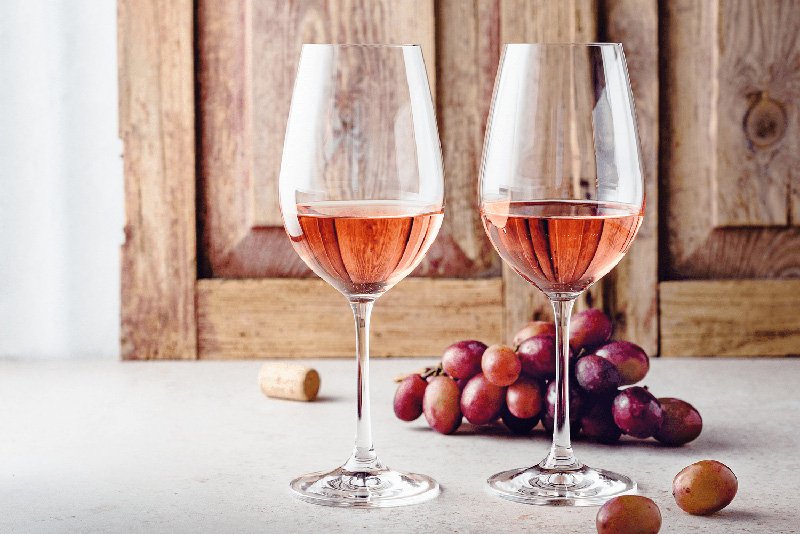
The White Zinfandel was discovered by accident. Bob Trinchero of Napa Valley’s Trinchero Family Estates used some grape juice to ferment his Amador County Zinfandel white wine, hoping to make it more ‘robust’. The resulting ‘sweet white wine’ was almost clear with a pale pink hue to it.
Sweet Zinfandel wines have a light body and a sweet taste of red fruit flavors, including cherries and peaches.
Sweetness Level: 35-120g residual sugar
3. Moscato

Moscato is the Italian name for the Muscat grape — one of the oldest grape varieties in the world. Predominantly grown in Piedmont, the sweet Moscato sparkling wine is rich in citrus and floral flavors.
Moscato is used to make red wine, white wine, and even pink Moscato.
Moscato d’Asti and Asti Spumante (sparkling wine) are some of the world’s best Moscato wines.
Moscato wine has fruity hints that make it a great wine option when paired with creme desserts like cakes and pies.
Sweetness Level: 90-120g residual sugar
4. Riesling
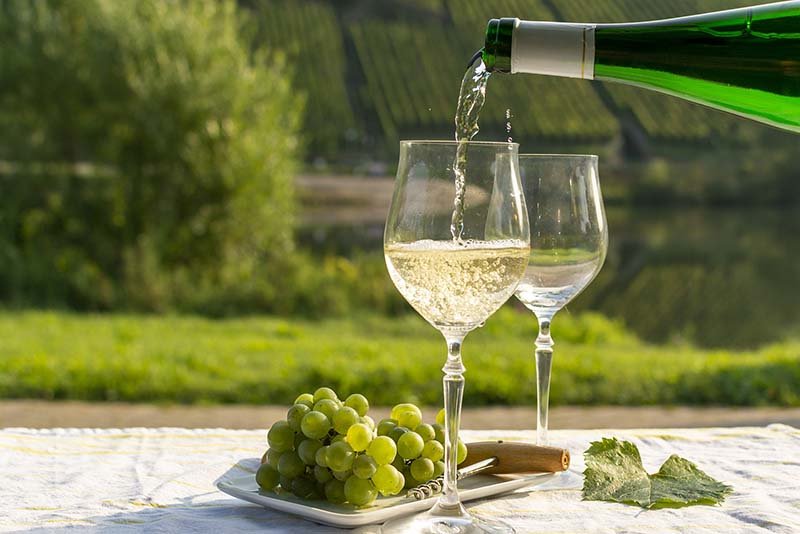
Riesling (often compared to Chenin Blanc) is a white grape that gives off a strong floral aroma and high acidity. That’s why it is used to produce sparkling wine.
It is a terroir-expressive grape variety — the taste (including sweetness) of the wine is affected by a change in terroir. It’s also versatile enough to produce dry, semi-sweet wines, and sweet wines.
Sweet Riesling wines have high amounts of residual sugar, making them perfect investment wines for long-term cellaring.
Sweetness Level: 90-220g residual sugar
5. Sauternes

Sauternes is primarily made in the Sauternes region of Bordeaux. It is made using grapes affected by noble rot (Botrytis cinerea), which is a fungus that helps in concentrating sugar in the grape, thereby increasing the wine’s sweetness.
(Other famous Noble Rot wines include the late harvest wine Spatlese made from German Riesling grapes, and the Noble Rot Dolce wine from Napa Valley.)
This wine has a sweet apricot and honey taste that is balanced by medium-high acidity and nutty notes. On the palate, Sauternes also offers a taste of butterscotch and peaches with a hint of coconut and tropical fruit.
Sweetness Level: 120-220g residual sugar
6. Ice Wine
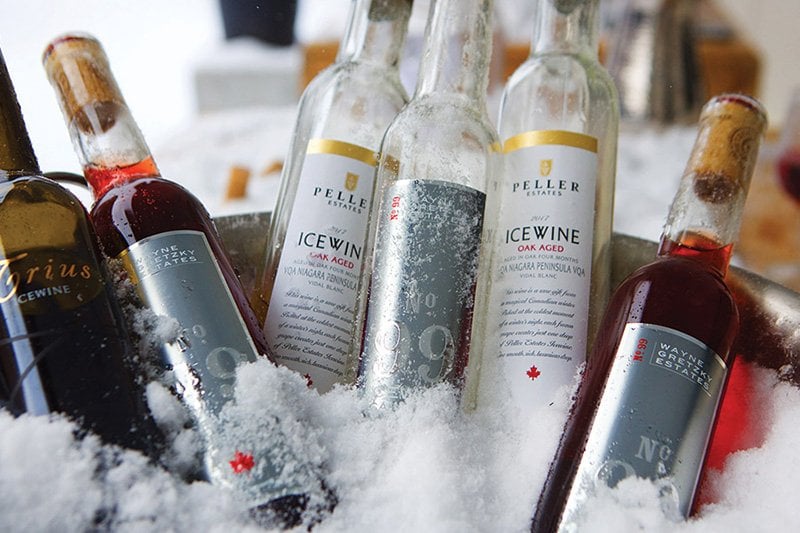
Ice Wine (‘Eiswein’ in German) is a very sweet dessert wine. The wine grapes used to make Ice Wine include Riesling, Vidal, and Cabernet Franc.
Red wine grapes like Merlot and Pinot Noir are also used to make sweet ice wines. Other examples are Furano (a tannin-rich sweet red ice wine), and other ice wines made in the Niagara Peninsula of Canada, Germany, Austria, and the US.
Sweetness Level: 110-200g residual sugar
7. Tokaji Aszu

Tokaji Aszu, a very sweet wine, comes from the world’s first demarcated wine region, Tokaj, located in eastern Hungary.
This wine can age beautifully from 20 to 40 years. It has dominant tangy fruit flavors, including tangerine and ginger, with hints of honey, apricots, and marzipan. If you are a sweet wine lover, then this is a must-try!
Sweetness Level: 60-450g residual sugar
8. Recioto Della Valpolicella
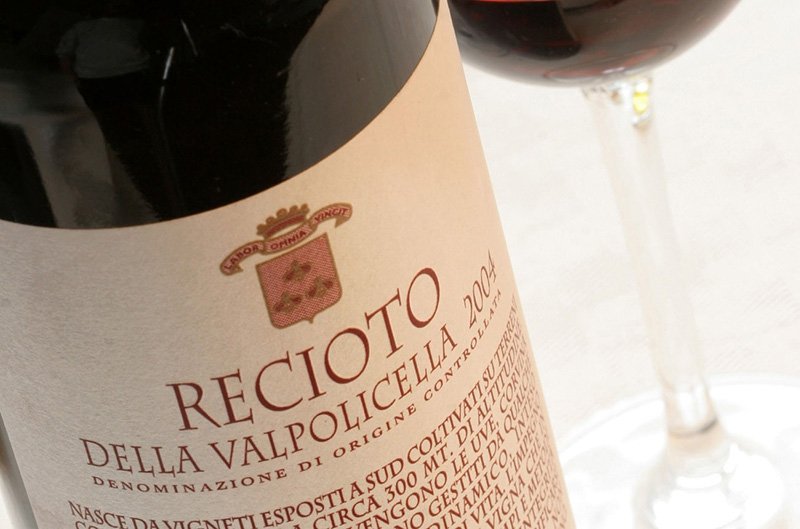
Valpolicella is famous for its Amarone wines, but it also produces some of the best sweet wines.
Recioto Della Valpolicella is a full-bodied sweet wine made from the traditional wine-making method. The grapes are dried on the mat to concentrate the sugar giving it a sweet taste.
On the palate, it gives off a sweet cherry flavor balanced by fresh and zesty flavors of oranges and lemons.
Sweetness Level: 110-200g residual sugar
9. Sweet Sherry

While dry Sherry is often used in cooking, its counterpart Sweet Sherry is a common dessert wine because of its fruit flavors and pleasant sweetness.
Moscatel and Pedro Ximénez are two of the most popular sweet Sherry wines.
Sweetness Level: 300+g residual sugar
Let’s now check out some fun facts, serving tips, and food pairings with sweet wines.
Levels of Sweetness in Red & White Wines

Apart from sugar, a wine’s sweetness is also determined by the levels of alcohol, acids, and tannins. Sugar and alcohol enhance its sweetness, while acids and tannins counteract it.
Wine producers describe the dryness or sweetness of wine using these terms:
- Bone Dry wines like Muscadet have less than 1g of residual sugar and often have a bitter mineral taste.
- Dry Wines have residual sugars of less than 10 grams and high acidity.
- Off-Dry and Semi-Sweet wines are wines with a hint of sweet fruit flavors. They have sugar content ranging from 10 to 35 grams.
- Sweet wines like Moscato wines (for example, Moscato d’Asti and Asti Spumante) have a fair amount of residual sugar (35g - 120g).
- Very Sweet or ‘Dessert Wine’ has 120 to 220 grams of sugar. For example, Ice wine, Tawny Port, and Sauternes.
Serving Tips and Food Pairings With Sweet Wine

- Glassware: To enjoy sweet wine to the fullest, serve it with a Port glass or any other option with a tulip or rounded shape. Such glasses reduce alcohol evaporation and enhance the wine’s flavors and aromas.
- Temperature: Serve your sweet wines (like Riesling or Moscato d'Asti) chilled between 45-50°F (7-10°C). Meanwhile, you’ll enjoy the red sweet wines (such as Port or late-harvest Zinfandel) if you serve them slightly cooler than room temperature, around 55-65°F (12-18°C).
- Food Pairings: Sweet wines pair exceptionally well with desserts, but they can also complement certain salty or savory dishes (like soy-glazed salmon, cured meats, or spicy Asian cuisine).
How Are Sweet Wines Made?

There are four methods that wine producers use to make sweet wines.
- Halting Fermentation: In this process, the winemaker halts the fermentation process before all the sugar is converted to alcohol. The wine is left with a good amount of residual sugar.
- Using Very Ripe Grapes: Here, the winemaker uses riper grapes for wine production. When the alcohol level reaches 10-16%, the yeast dies down. Since ripe grapes have a high sugar level, the wine is left with the sweetness of residual sugar.
- Evaporating Water: Another method to concentrate the sugar in grapes is by drying them in the sun. Since the water evaporates, grapes are left with a high sugar level that gives the wine a sweet taste after fermentation.
- Filtration: In this method, the wine is filtered after the desired level of sweetness is reached. Filtering the wine removes the yeast, and it doesn’t ferment anymore.
Now, are sweet wines meant to be stored for the long term?
Let’s take a look at their aging potential.
Does Sweet Wine Age Well?

Since sweet wines like Sauternes and Tokaji Aszu have high amounts of residual sugar (unlike dry wine), they can age comfortably for more than 50 years. Sugar acts as a preservative for wine. Even a semi-sweet wine can easily age for more than 20 years.
So, how do you buy the best sweet wines from the various types you’ve seen?
Choosing the best sweet wine to buy is a complicated task. You’ll have to find an authentic bottle at the right prices from the world of wine merchants, wine auctions, or wine exchanges.
Easier said than done, right?
Don’t worry.
Vinovestoffers the easiest way to buy any kind of wine from anywhere in the world!
Here’s how it works.
Invest in the Finest Sweet Wines Through Vinovest

Vinovest is an online wine investment company that helps you buy fine wines from around the world. Vinovest will also authenticate your wines, store them safely for the long term, and even sell your wine when the time is right!
How Does it Work?
Investing with Vinovest is easy and takes only a few steps to get started.
1. Sign up on the Vinovest website.
2. Answer a set of questions on your risk appetite and investment preferences.
3. Make your first deposit of a minimum of $1000.
4. Start building your fine wine investment portfolio and watch it grow!
Benefits
Here are a few reasons why you should invest through Vinovest:
- Easy Buying and Selling: Vinovest has an AI-driven wine investing platform that makes it easy to buy and sell wine bottles with just a few clicks.
The site allows you to sell your wines at any time. However, it's best to sell your wines after 5-20 years (when they’ve reached their peak value.)
To make things easy for you, our advisors will work with you to maximize your returns - no matter the market conditions. They’ll guide you on the best liquidity options and the best time to sell your wines.
- Best Prices: Vinovest buys wine directly from wine merchants, wineries, and wine exchanges around the world. That’s why you get the best below-retail prices for your wines.
- Curated Portfolio: Their Master Sommeliers and data scientists use proprietary financial models to create a high-performing portfolio for you.
- Optimal Storage: Vinovest’s warehouses are monitored 24/7 to maintain optimal temperature control, the right light, and humidity. The warehouses also have a backup power supply in case of power cuts.
- Hassle-free Delivery: If you want to open your Cabernet Sauvignon bottle for a special occasion with your wine drinker buddies, Vinovest will get your bottle delivered to you.
And, if you want to sell the wine, Vinovest will have it delivered to your buyer.
- Provenance and Authenticity: Vinovest’s wine experts ensure the Provenance of the wine bottle and its authenticity. So, you don’t have to worry about counterfeit bottles ever again.
- Insurance: Every wine bottle you buy through Vinovest comes with comprehensive insurance that covers breakage and loss.
- Access to a Deep Network: With Vinovest, you get access to a deep wine network, limited releases of wines, and private winery sales.
- Ownership: You own each bottle that you have in your portfolio. At any time, you can choose to sell your bottles or open one for drinking.
Grab a Sweet Wine for Your Cellar!
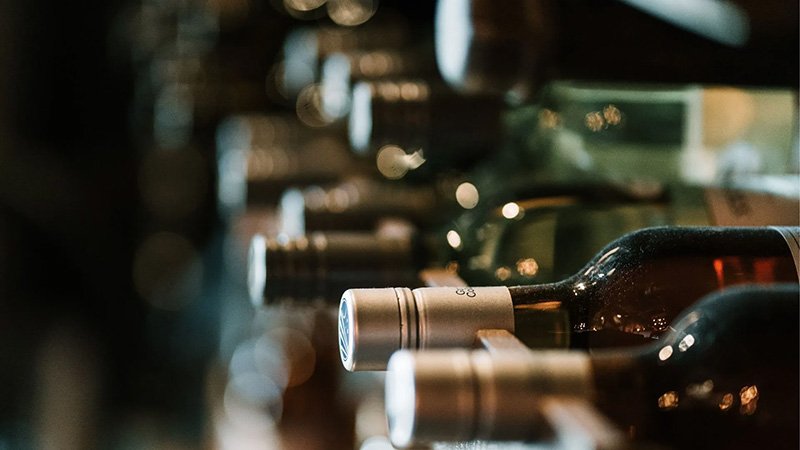
Besides being the perfect drink for a celebration, some sweet wines also have great aging potential. It is not uncommon to find a 100-year-old Madeira on sale!
However, with an endless variety of sweet wines to choose from, it becomes challenging to find the best bottles.
Vinovest’s expert team can help you find the best Cabernet Sauvignon, Pinot Noir, sweet red wines, or sweet whites at the best prices from across the globe.
Sign up to start your online wine investment journey today!



